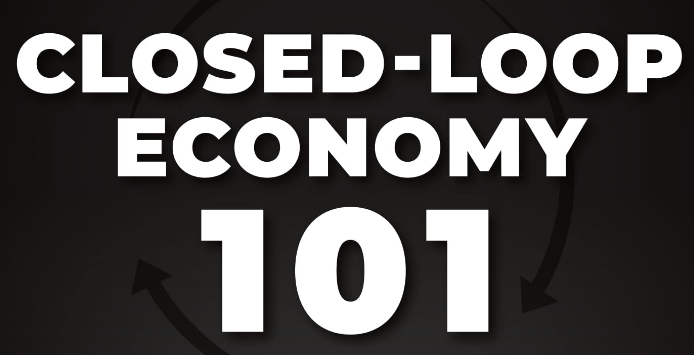As a business owner or manager, you already know what a circular economy, or closed-loop economy, model is. However, do you understand all of its benefits? Have you considered how to incorporate it to enhance your business? Here’s a closer look at how closed-loop economy models function and how they may benefit your business.
In addition to a “circular economy,” a closed-loop economy may also be referred to as a closed-loop supply chain or closed-loop system. It describes an economic model that produces no waste because everything is reused, recycled, shared, or repaired. Instead of producing waste, that so-called waste is used as a resource to create a new substance or product.
The closed-loop economy has become an increasingly popular approach for obtaining, creating, and consuming materials and goods. In fact, estimates suggest it will be worth 4.5 trillion dollars by the year 2030. While that figure represents the global scale, your business can benefit from adopting a closed-loop economy in numerous ways. This includes boosting customer loyalty, improving your company’s public perception, and producing significant long-term savings. A closed-loop economy also reduces your reliance on external suppliers.
When more companies opt for closed-loop economies, the result can help protect raw material supplies as well as the environment. Innovation and job growth are encouraged. Moreover, savings can boost corporate profits and be passed on to consumers.
How a Closed-Loop Economy Works
A closed-loop economy occurs when companies work together to create a closed-loop supply chain. This may involve reconsidering how products and their packaging are not only designed and manufactured but sold, refurbished, and reused. The more businesses join a closed-loop supply chain, the more raw material can be saved and the greater the benefits to companies and consumers can become.
Currently, most companies follow a linear economy model, where raw materials are used by manufacturers to design and create products, which are then used and disposed of by individuals or companies. Little material is saved, and most is wasted, and the process must start again with new raw materials, assuming they are available.
A closed-loop economy, however, has no end or waste. Materials are collected after being consumed and reprocessed into raw materials that are then used for manufacturing. The circle includes consume > collect > process > design and manufacture > consume, and the cycle continues. A closed-loop economy reduces manufacturing costs and produces more sustainable products for consumers. The attached resource, Closed-Loop Economy 101, describes more about how these systems work. Courtesy of Quincy Recycle.




